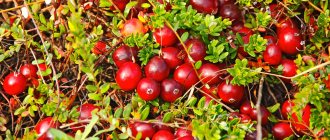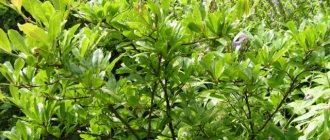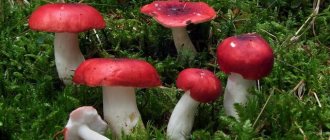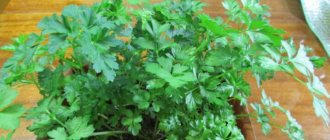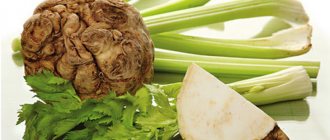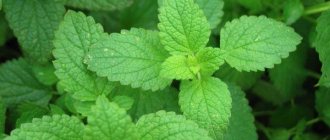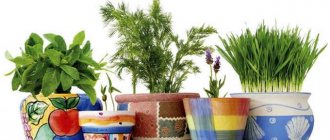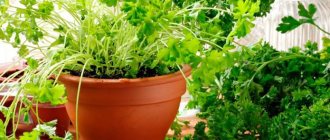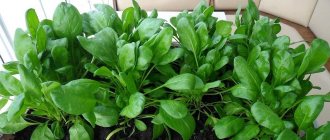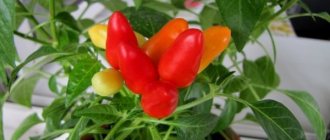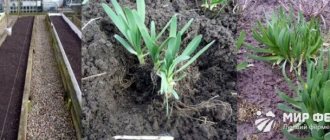Gardeners and gardeners love to grow various herbs and spices in their beds, which perfectly complement dishes and have therapeutic properties. Among such plants, fennel stands out - a spice with an unusual taste, known to the ancient Romans and Greeks even before our era.
Fennel is a close relative of dill.
It can be found in the wild on all continents. There is especially a lot of fennel in Western and South-Eastern Europe, North Africa, New Zealand, Western and Central Asia, and the Caucasus. It prefers hard and dense soils, places near roads, ditches, and grows on arid, mountainous surfaces. In many countries, vegetables have been domesticated and cultivated on an industrial scale. In the Russian Federation, it is cultivated in regions with a hot climate.
Fennel - a spice similar to dill
Inexperienced gardeners cannot distinguish dill from fennel and confuse fragrant spices. This is not surprising, because both cultures belong to the same family - Umbrella.
The fluffy crowns of fennel in the garden are very similar to dill bushes
The common name for fennel is Voloshsky, pharmaceutical or wild dill. However, there are many differences between these two brothers in cultivation, methods of consumption, and chemical composition.
History and botanical description of fennel
The birthplace of the culture is the Mediterranean coast. The Greeks were the first to notice the aromatic herb on the battlefield of Marathon, where they won in 490 BC. a landslide victory over the Persians. Since then, a dill-like plant called “marathon” has become a symbol of military victory. Fennel received its modern name in the era of Ancient Rome. The term foeniculum is Latin for "hay". From the Mediterranean it spread to Northern Europe, Egypt, China, and India.
The ancient Greeks first noticed the modest yellow flowers of fennel.
Fennel (Foeniculum) is a genus of perennial herbaceous plants from the Dicotyledonous class. The flowers form yellow “baskets” or umbrellas up to 15 cm in diameter. Fennel is distinguished by an unusual root, shaped like a spindle. The erect, light-colored stem grows up to 2.5 meters and has excellent branching. The leaf blades are pinnately dissected and are located on cuttings. The fruits are ovoid, oblong, up to 1 cm long, with a sweet anise flavor. The plant blooms in July or August, and the fruits ripen by September.
Chemical composition and nutritional value
The main chemical found in fennel is anethole, which has antitumor and anti-inflammatory effects. The seeds contain potassium, zinc, copper, manganese, and a lot of calcium. The foliage contains a lot of phosphorus and iron, which is good for the heart, blood vessels, and digestion.
Fennel has a rich chemical composition
And the plant smells wonderful and unusual thanks to the presence of essential oils with anethole, cineole, camphor, fenchone. The plant culture is rich in oleic, linoleic, palmitic fatty acids, glycosides, flavonoids, carotene, minerals, vitamins (it is especially rich in B vitamins). The plant has a low calorie content , only 31 kcal per 100 g.
Varieties and varieties
Common fennel includes several species. This:
- vegetable,
- oilseed,
- ordinary (pharmacy dill).
Pharmacy is grown to obtain seeds and squeeze oil from them. In vegetables, all parts of the plant are eaten. Common fennel has several botanical varieties (pepper, Florentine, Roman). This vegetable crop has only 7 varieties and one hybrid.
Vegetable fennel Soprano in the garden
Among them, gardeners have chosen the following varieties:
- Leader . It grows up to 170 cm and has large leaf blades. Ripens in 50 days.
- Soprano . From a square of plantings on the 115th day, up to 4 kg of greenery and up to 2 kg of dense white heads of cabbage weighing up to 100 g are collected.
- Daredevil . This variety produces heads of cabbage only during long daylight hours and plenty of sun, which is why Udalets is most often cultivated in the south of Russia. The vegetable crop reaches 50 cm and produces hundred-gram heads.
- Autumn handsome man . The plant is quite tall, the bush can grow up to 180 cm. It is characterized by fragrant, juicy greens. On the 40th day after planting the seedlings, heads form.
In addition to these varieties, there are also Semko, Aromat, Luzhnikovsky, Corvette, and the Rudi F1 hybrid.
Planting dill
When to plant dill
The first sowing of dill in open ground is carried out in early spring, but if you want to have green dill on the table in spring, summer and autumn, then it is best to use the conveyor method of growing the crop - sow the seeds every 10-12 days from early spring to the end of August. Planting dill in the spring involves preparing the site in the fall - digging up the soil to the depth of the fertile layer, but it is better to apply organic matter in the form of manure not under dill, but under its predecessors, the best of which are cabbage, beets, cucumbers and legumes.
You cannot plant dill in areas where Umbelliferae - carrots, parsley, cumin, fennel and parsnips - grew before it.
The best neighbors of dill are cabbage and cucumbers, and Umbrella crops are considered the worst. Dill and carrots are an unfortunate combination, just like parsley and dill. It is much better to grow dill and garlic in the same area. Dill and potatoes get along well with each other.
In early spring, before sowing seeds, the soil is loosened with a rake and 15-20 g of urea, 15-20 g of potassium salt and 20-30 g of superphosphate are added per m² of plot.
How to plant dill
Before sowing, dill seeds are poured with water for 3-4 hours, changing it several times to wash out substances from the seeds that slow down their germination. After this, the seeds are dipped in a strong solution of potassium permanganate for two hours, then washed, dried and sown in grooves 2 cm deep, located 15-20 cm apart. The seeds are laid out in the furrow at a distance of 1-2 cm and, having planted the seeds, the crops are watered. Dill germinates at a temperature of 5 ºC, and to speed up the emergence of seedlings, the area is covered with agrospan. The first shoots may appear in one to two weeks.
Application and beneficial properties
Fennel has found its place in medicine and cooking. Moreover, all parts of the plant are used. Due to the large amount of fiber, its consumption is useful for improving the functioning of the gastrointestinal tract. Seeds and fruits are used for problems with the liver, heart, and intestines. They normalize metabolic processes, positively influencing the entire body as a whole.
Fennel has a choleretic, expectorant, diuretic, and sedative effect. For adults, fennel tea is useful for intestinal infections, belching, and heartburn. Infusions and decoctions of leaves and fruits are used for acne, furunculosis, and other inflammatory problems with the epidermis. Brooms made from stems with leaves help with insomnia, neurasthenia, and excessive excitability, if you steam them regularly at least a couple of times a week.
Fennel tea - full of benefits for the body
The seeds of the plant contain substances (phytoestrogens) whose effects are similar to the female hormone estrogen . Thanks to this, drinking fennel tea helps smooth out the painful symptoms of PMS, increase sexual desire, and improve hormonal levels in women.
When breastfeeding, eating fennel stimulates lactation. The fact that the seasoning does not cause allergies in infants, since its concentration in breast milk is negligible, speaks in favor of the plant. But even this amount helps to calm the baby’s stomach cramps and bloating. Older children are allowed to give a teaspoon of fennel seed decoction after meals to eliminate flatulence.
Fennel is also beneficial for men. It helps in preventing the formation of tumors of various origins in the prostate gland. Eliminates pain and swelling due to prostatitis. This is a delicate diuretic that prevents urine from stagnating and pathogenic bacteria from developing in the organs of the urinary system.
All parts of the plant are used in cooking. They add a spicy taste to salads, meat and fish dishes. Stems and tubers are stewed together with vegetables and used as a side dish for hot dishes. The leaves and stems are washed and eaten fresh.
Important! Leaves, tubers and stems are eaten immediately, otherwise after a while they lose their juiciness and pleasant aroma.
Seeds are added to preservation. The leaves and stems are also suitable for canning. Fennel goes well with anise, pepper, basil, coriander, and cumin.
Dill and fennel: how do the plants differ, what are their features?
These plants are often confused because their leaves have almost the same shape. And in the pharmacy they sell fennel seeds under the name dill. People called it Voloshsky dill. Meanwhile, these are different plants, although they are close relatives and can even mix with each other. Let's look at them separately, and then figure out how they differ.
Everyone knows what dill looks like. Even if you have never lived in a village and do not have your own garden, such a plant can be found on store shelves even in winter.
This is a rather tall annual herbaceous plant, growing from 40 to 150 cm. The root is thin, taproot. The stem is usually single, although there are bush varieties in which up to a dozen stems emerge from one root.
The very top of the stem is decorated with an inflorescence in the shape of a double umbrella. First, from 20 to 50 rays extend from the stem, which end in a smaller copy of the first umbrella. The flowers are small and yellow. Blooms in June – July.
Dill leaves contain 2.5% protein, 0.5% fat and 6.3% carbohydrates. Their calorie content is low - 40 kcal/100 g. Fiber content is 2.8%, which is 14% of the daily requirement (per 100 g of dill leaves).
They are also rich in vitamins, especially vitamin C (100 mg or 111% of the daily requirement per 100 g) and carotene (90% of the daily requirement per 100 g). They contain relatively little folic acid - 6.8% of the daily value. Vitamin E (11.3% of the requirement), vitamin B6 (7.5% of the norm), PP (7%) and B2 (5.6%) are also present.
Among the mineral substances, we note calcium (22% of the norm in 100 g), magnesium (17.5%), potassium (13.4%), phosphorus (11.6%) and iron (8.9%), and among microelements - manganese (63.2%), copper (14.6%) and zinc (7.6%). The content of potassium, calcium and phosphorus in the seeds is 3-4 times higher than in the leaves.
Fresh dill leaves are almost the first to appear on our spring table, back in April, when the body is in dire need of vitamins. They are added to salads, soups, sauces and side dishes, and they are part of many seasonings.
The healing properties of dill have been known since ancient Egypt. They knew about them in Persia and India. In Ancient Greece, Hippocrates praised him, and in the Middle Ages, Avicenna devoted a lot of space to him in his monumental work “The Canon of Medicine.”
They treated not only diseases of the gastrointestinal tract, but also kidneys, migraines, anemia, insomnia, and eye diseases.
In this, folk experience is confirmed by modern science, which has confirmed that dill has the following properties:
- antispasmodic;
- anti-inflammatory;
- choleretic;
- diuretic;
- vasodilator;
- expectorant;
- antiseptic.
We suggest you read: Is it possible to grow balsam as a houseplant?
Dill is also used in cosmetics to get rid of acne and whiten freckles.
For women, dill helps get rid of cycle disruptions, but pregnant women need to be careful with it, since dill oil tones the uterus and, if consumed excessively, can lead to miscarriage.
For men, dill can help with problems with potency. It is not for nothing that in Ancient Greece it was considered an aphrodisiac and was pinned to clothing to increase desire. Dill dilates blood vessels, including those in the corpus cavernosum, so the rumor about this property was well founded. In addition, it relieves nervous excitement and eliminates self-doubt.
It perfectly whitens teeth and eliminates bad breath, so chewing a sprig of dill will be beneficial on a date.
However, dill should not be eaten by those who suffer from allergies. Unfortunately, the essential oils of this plant are quite a powerful allergen. It is also not recommended for hypotensive patients to get carried away with the product.
It would seem that there is nothing simpler - scatter the seeds on the ground in early spring, slightly loosen the soil and pick the fragrant greens a month later. Well, that’s possible, but it’s better to approach this matter according to all the rules of agronomic science. Then the harvest will be higher, the greens will be juicier, and there will be much more vitamins in it.
The bed needs to be prepared in the fall: dig it to a depth of 20 cm and add compost. As soon as the snow melts, you can start planting. Dill seeds are small and should be planted shallow. They germinate slowly due to the abundance of essential oils that prevent water absorption and swelling.
The first shoots will appear in 2-3 weeks. You can speed up this process by pre-soaking the seeds for 3 days in warm water (50 degrees). Some gardeners even scald them with boiling water. If you planted soaked seeds, be sure to cover the bed with film. And in the case of sowing with dry seeds, this is useful. Shoots will appear much earlier.
Seeds can be sown several times at intervals of two weeks. Then you will be guaranteed fresh greens all summer long. Dill is also planted before winter, just before the snow cover is established, so that the seeds do not have time to germinate.
You can plant dill even in January! To do this, the bed is cleared of snow, seeds are scattered and sprinkled with compost or peat.
Possible harm and contraindications
Fennel decoctions and infusions should be used with caution due to the presence of a natural female hormone in the vegetable crop. Until the 19th century, fennel decoction was used as an abortion remedy by midwives and village doctors. A large amount of essential oils in it causes the passage of the placenta and uterine bleeding. Due to its hormonal effects, consuming the plant in large quantities during pregnancy sometimes provokes premature birth.
On a note! In ancient times, many women of childbearing age died from infusions and decoctions of fennel. Only after studying the chemical composition of umbrella plants and identifying their toxicity were acceptable standards for the intake of these crops established.
Women should be careful when consuming fennel in large quantities.
You should not use dill water, which is based on fennel seeds, for long-term treatment of infants. Small studies were conducted in which 4 children participated. As a result, it was found that estradiol levels in the blood after treatment with dill water were 15 times higher than normal values. This led to the very early appearance of breasts in girls.
There is no need to get carried away with “dill grass” for women with hormonally dependent tumors of the mammary glands and uterus. If fennel is consumed too often in abnormal quantities, the components of its essential oil can cause tachycardia, neurotic changes, and shortness of breath.
Advice! When treating with fennel-based medications, it is important to follow the recommended proportions. If nausea, dizziness, or diarrhea occur after taking the medicine, stop treatment and consult a doctor.
Dill
This spice is a “classic” of garden beds and has been used by mankind since ancient times. It’s hard to imagine both a summer cottage and a dining table without dill. This plant is more popular than fennel, but is in many ways similar to it.
Description
Externally, dill is very similar to its wildly growing “brother”. The same tall, branched, erect stem with longitudinal ribbed stripes and a waxy coating. At first glance, the leaves are also similar - sessile or petiolate, divided into lobules. If you don’t look too closely at the flowers, they are also identical – small, five-parted, forming umbrellas. It is difficult to distinguish between each other and the seeds are greyish-brown in color.
Dill in the garden
Beneficial features
Basically, garden seasoning is used as a spice for pickling, preserving and pickling vegetables. Essential aroma and taste improve the quality of salads and hot dishes. But dill is valued no less than fennel for its healing properties - they have an almost identical beneficial composition.
Among the essential oils of dill, carvone should be highlighted. Fatty oils are represented by glycerides of linoleic, oleic, petroselinic, and palmitic acids. The spicy culture is attracted by its rich vitamin and mineral set.
The fruits are used to make dill water for babies; it helps improve intestinal motility. Decoctions and infusions have a calming and antispasmodic effect, expectorant and vasodilator, diuretic and choleretic.
For colic in the tummy
Dyspepsia in children is treated with dill decoctions. The composition of dill waters is useful for cystitis in adults, relieves flatulence and abdominal pain. Every property inherent in fennel can be attributed to garden dill.
Differences and features of fennel and dill
Dill and fennel are similar in appearance, because they belong to the Umbelliferae family. The amount of fatty oils, flavonoids, vitamins, and minerals in both cultures is approximately the same. Wild fennel is most similar to dill.
Two seemingly similar spices have many differences
But there are many differences between cultures. They are discussed in the following table.
| Characteristic | Dill | Fennel |
| Arrangement of inflorescences | They can develop additionally in the branches of the stem. | On top of the stems. |
| Stem | Height up to 120 cm. The central stem is hollow inside, without thickening at the base, there is practically no foliage on it. | Height up to 250 cm. The stem is not hollow, but porous, at the base there are thickenings and abundant foliage. In those places where the leaf blades are attached to the stem, heads of cabbage weighing up to 300 g appear. |
| Smell and taste | Fragrant, sharp, tart aroma. The taste is rich, spicy with a slight bitterness. | The smell is exotic mint-anise with a slight bitterness of tarragon. The taste is sweetish and tart. |
| Root | Thin, weak. | Powerful, multi-headed at the top, branched, fusiform, up to 2 cm thick. |
| Leaves | The leaves are ovate, pinnately crossed, located on long stalks. | The stem blades are alternate, divided into narrow linear segments, triangular-ovate. The last lobes are linear-subulate or filiform. The lower leaf blades are petiolate, and in the vegetable variety they emerge from the head. |
| Seeds | Small and flat ovoid fruits, containing 4% essential oils. | The ovoid fruits are greenish-brown in color, with 5 ribs, reaching 10 mm in length. The content of essential oils is 6%. Essential oil canals are visible on the sides of the seeds. |
| Frequency of landings | Annually. | Once every 2-4 years. |
Fennel loves heat more than dill, so it is more sensitive to frost. In the middle zone, only some of its varieties fully ripen, since it prefers a subtropical climate.
Fennel contains more nutrients, sugars, and is sweeter than dill. For cooking, it is more valuable, since all its parts are eaten. Dill's young leaves and stems, as well as dry seeds, are eaten. For home pickling of vegetables, coarse stems with baskets of seeds are also used. The bases of fennel stems are fried, pickled, and stewed. The leaves and seeds are used to season culinary delicacies made from vegetables, different types of meat, and fish. The seeds and essential oil are added to baked goods, ice cream, coffee drinks, and tea to impart a mint-anise aroma. The seeds are used as a medicinal remedy.
Fact! Fennel has greater nutritional value and taste. They can easily replace dill. In turn, dill contains many times more vitamins A, C, K and B6.
Bush dill
This type of dill differs from others in the huge number of openwork leaves (more than 10,000 on one bush), as well as the late formation of umbrellas (on average, this takes more than 70 days).
Varieties of bush dill
Frost is a medium-ripening variety with a bluish, waxy coating on the leaves and a pronounced aroma. This variety of dill is sown from April to August. Mature plants reach one and a half meters and can be used for freezing, canning, and also fresh.
Kutuzovsky is a medium-late variety that produces the first harvest approximately 41-45 days after emergence. It has a large number of delicate light green leaves and high taste. The plants are suitable for drying, freezing, pickling and seasoning.
Mischievous is also a mid-late variety. Its peculiarity is the delayed formation of umbrellas with fragrant seeds. The plants reach a height of over a meter and are best suited for fresh consumption.
How to sow bush dill
In the risky farming zone, so that the seeds have time to ripen, bush dill is recommended to be sown as seedlings in March–April.
If you are ready to be content with only fragrant leaves, then you can sow this dill in open ground all season.
The soil is prepared before sowing by adding a bucket of compost per 1 sq.m. You can also use mullein solution (1:10). The seeds are buried 1 - 1.5 cm. In order for dill to bush well, it is not advisable to plant it too close to each other. On average, 20-30 cm between plants is sufficient. Water the seeds 1-2 times a week, usually by sprinkling.
It would also be a good idea to occasionally loosen the soil (up to 5 times per season).
How to harvest dill
Usually the lower leaves are collected first, as they dry out faster. As the plant grows, pluck out the side shoots. And at the end of the season, the stems and umbrellas are picked and used for canning.
Experienced gardeners claim that dill leaves picked in the morning after the dew has disappeared are much juicier.
Other plants similar to dill
There are many plants similar to dill. These are some shrubs, indoor flowers, carrot tops, small sprouts of juniper and pine trees. But among them there are poisonous ones that can cost a person his life.
Fennel flower can be confused with various poisonous plants
Poisonous
Dangerous crops similar to dill include poisonous hemlock or water hemlock . A herbaceous, moisture-loving plant that lives near bodies of water. Thin, narrow leaves and inflorescences in the form of white umbrellas can be mistaken for dill. The smell of the leaves is reminiscent of celery, the root vegetables are similar in taste to radishes or rutabaga.
Veh poisonous grows near the water
Just 50 g of rhizome can kill a medium-sized animal due to the large amount of cicutotoxin poison . A few minutes after consumption, a person begins to experience nausea, vomiting, convulsions, and dizziness. Urgent gastric lavage and antidote are necessary.
Another poisonous plant is the meadow parsnip , another member of the umbrella family. With its thin leaves and yellow flowers, like dill, it is very similar to this fragrant herb. Pollen and juice of meadow parsnip contain psoralens, substances similar to furanocoumarins of the poisonous Hogweed Sosnowski, which deprive the epidermis of its protective properties against ultraviolet radiation.
Meadow parsnip is a dangerous plant, very similar to fennel.
Upon contact with a plant, if it burns with poison, burns appear on the affected area of the skin within 24 hours. Meadow parsnip becomes the most dangerous in July and August, when it actively blooms.
Indoor
Some indoor flowers look like dill. It is important not to confuse them with spice.
Asparagus pinnate
Cyperus
These include:
- Asparagus pinnate . This is a moisture-loving, light-loving flower, similar to dill, with very lush, beautiful, flowing, fluffy and narrow foliage.
- Cyperus . Externally, this home flower resembles fragrant dill bushes with its tall stem and umbrella whorls at the end, consisting of narrow leaves of different lengths and colors. Blooms with brown inflorescences in a rosette. This plant is very moisture-loving, its roots are not susceptible to rotting, which is why it is called swamp. There are about 600 species of Cyperus in nature; they grow mainly on the African continent; several dozen varieties are grown at home.
Weeds
In nature there are forest and meadow weeds that in appearance resemble a dill bush. One of them is hogweed. There are varieties of this plant that are added to first courses, as evidenced by the very name “hogweed.”
Poisonous weed - Sosnowski's hogweed
But along the roadsides, in fields, and groves you can see giant, over 3 meters, plants with white flower baskets. This is a poisonous Sosnovsky's hogweed , which at a young age is very similar to dill. As it grows, it turns almost into a tree, has a thick trunk, whole leaves, and flatter, irregularly shaped inflorescences. The scalding milky juice of the poisonous weed makes the epidermis defenseless against ultraviolet radiation. Immediately after contact, burns and blisters appear on the burned skin, and if the juice gets into the eyes, it burns the mucous membranes within a few minutes and in some cases provokes the development of blindness.
Omega, aka Hemlock spotted (Umbrella family)
hemlock weed is very similar to dill . It has the same high stem and umbels with small white flowers. It grows on roadsides and is found in garden plots and vegetable gardens. All parts of this greenery, which looks like dill from a distance, are poisonous.
Plant differences
The leaves of dill and fennel smell differently: dill has a spicy aroma, while fennel has a sweetish, anise-like aroma. The fruits of fennel are elongated and fall into halves, while those of dill are flat, oval, and whole. Dill does not form a head. Dill leaves are green, while fennel leaves have a noticeable bluish tint.
The medicinal properties of dill and fennel are similar, but in fennel they are much more pronounced, especially lactogenic and expectorant. The difference between these plants is not very significant.
See below for the beneficial properties of fennel.
by leaves, by inflorescence
There are plants that look similar to dill, here are some of them:
1 Nigella , it is more correct to call this plant Nigella sativa or black cumin, although it is a flowering plant.
2 Fennel or Italian dill, popularly called Voloshsky or pharmaceutical dill.
3 Meum atamante.
4 Wormwood – abrotan or “God’s tree”, or “Dill tree”.
5 At the initial stage, dill and carrot tops are very similar.
The leaves are very similar to dill:
vegetable chrysanthemum (vaguely similar)
pine (very young sprout)
juniper (very vaguely similar)
The leaves and inflorescence are similar to dill, or fennel. Many mothers are familiar with this plant, as they give their children tea to drink from it for colic in the tummy.
A bit like dill or herringbone, a plant that grows in acidic soils is horsetail.
In the initial stage it is very similar to dill and carrots; a young gardener can confuse the seedlings.
There are no similar posts
